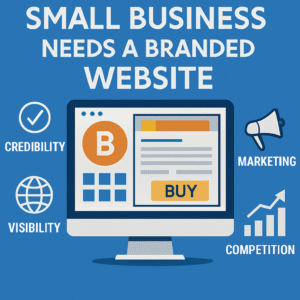In today’s competitive world, it is really hard to grow a business for any startup or well-established business. Starting a new business is always challenging. You always have to keep ahead of your competition, and to do so effectively, your business should have good visibility among your targeted audience. In this digital era, it’s only possible if you have a good digital presence. So the question is, where to start?
There are multiple areas available to address, but a well-designed Website Design is the first step in creating your digital presence.
The Importance of Website Design for Startups
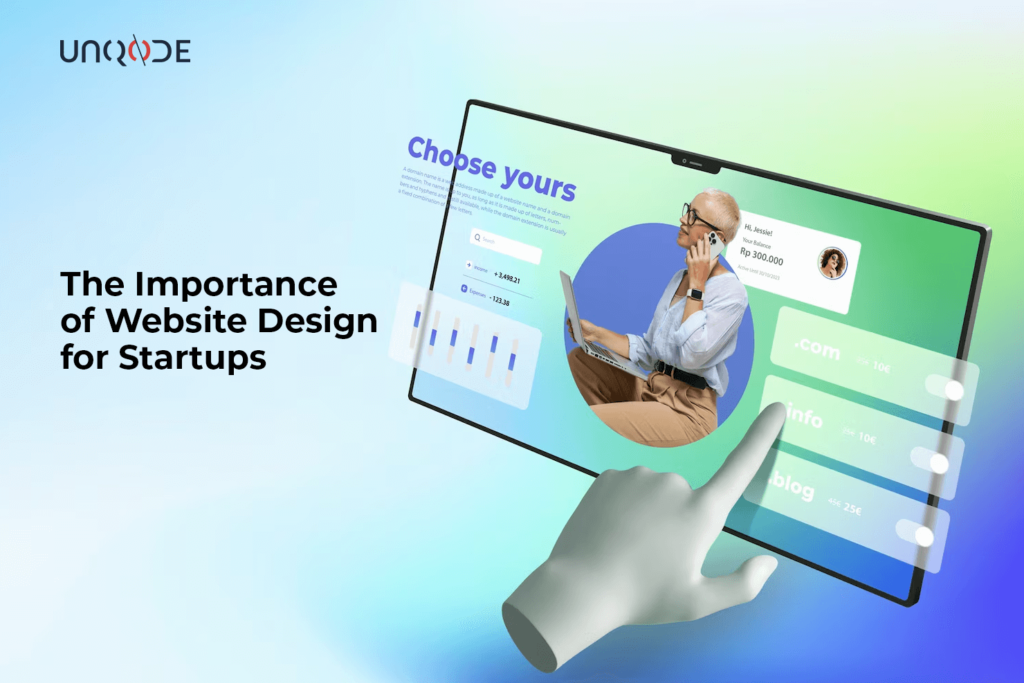
Now, we know that creating a well-designed website is the first step in creating your digital presence. A good website should look good, be user-centric, and be well-optimized. It depends on multiple factors.
A professional website is an essential digital product or digital tool that will connect you with potential customers, increase your business visibility, boost your credibility, and attract more business, which is essential for business success.
In a few minutes, we will explore the key elements of effective website design that can help startups stand out in the digital world.
Let’s see how a good website can boost your business growth:

Online Presence: A well-designed and well-optimized website is vital for any startup business. When you can not keep your offline store open 24/7, a website allows you to have a 24/7 online presence across all time zones and reach out to your target audience. A professional website will give you a professional image and help you attract more customers and even angel investors.
Cost-Effective: If you are running a business, you know better than how costly traditional marketing methods are, e.g., Printing Posters, Radio and TV ads, organizing events, etc. And after spending lots of money, the reach remains limited. But simultaneously, a website allows you to reach a larger audience. You can run unlimited online promotions, marketing campaigns, and ads quickly at a minimal cost.
Increase Credibility: A professional website will increase your credibility in your industry. You can better explain your vision and mission through a website, which is difficult with an offline shop. You can keep and add as many products to your e-commerce store as you possibly can, and you can also manage unavailable inventory, e.g., you can take the order and deliver it later, but that’s not possible with an offline business. You can also show the testimonials of other customers who have already availed of your product and services as social proof, which is really important to convince new customers.
Digital Marketing: A website is a great marketing tool for any business. Using digital marketing, you can promote your business and reach potential buyers at minimal or no cost. If you have a marketing budget, you can do paid promotions by running ads and influencer marketing. However, if you are a small business and have no budget to spend on marketing campaigns, you can use organic methods to bring customers to your website.
Several studies have found that organic customers tend to be more loyal than paid customers. One such study published in the Journal of Marketing found that customers acquired through word-of-mouth (organic) had a 25% higher retention rate compared to those acquired through paid advertising. Another study by Bain & Company discovered that increasing customer retention rates by just 5% can lead to a 25-95% increase in profit.
With an organic marketing strategy, you can promote your business through social media posts, blogs, and articles on content platforms such as Medium, YouTube, etc., and explain the unique selling points of your product and business.
Customer support: Good customer support is necessary to win customer loyalty. However, setting up a support center is difficult for Startup businesses. If you have a website, you can solve this problem by adding a small contact form, chatbot, or ticketing system to address customer queries.
Analytics: Another advantage of the website is Business Insights, and it is easy to get tools like Google Analytics. You can monitor your website traffic, see which pages are popular, and track conversion rates.
These insights also allow you to analyze customer behavior, what customers feel about your product, how they are using your services, and the effectiveness of your marketing campaigns, so you can make data-driven decisions to improve your website and marketing strategies.
Key Elements of Effective Website Design
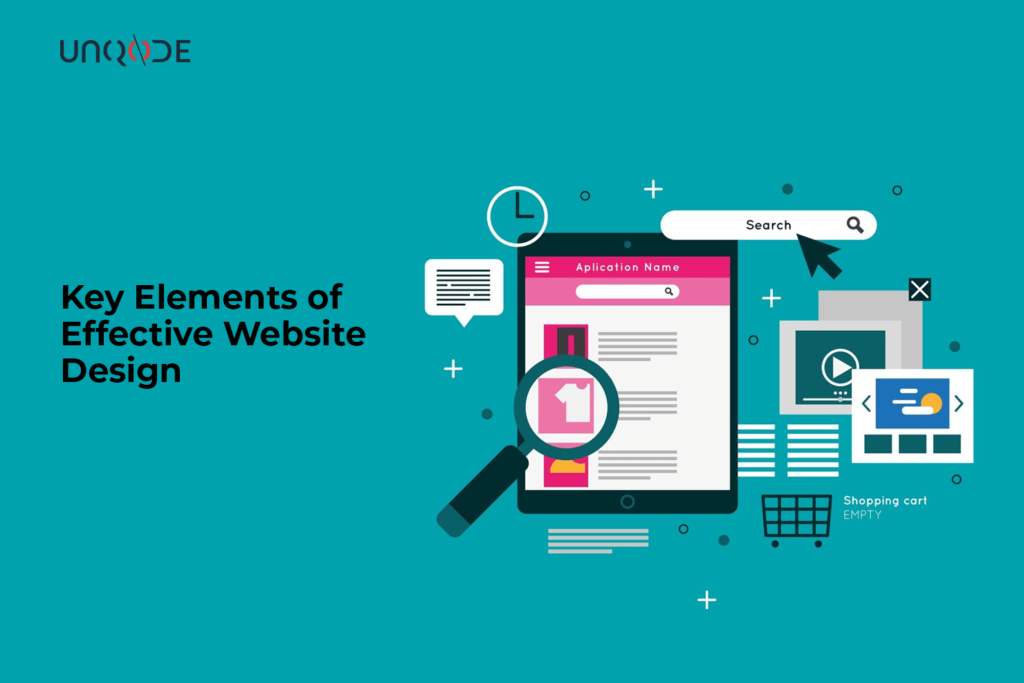
You must consider a few technical aspects while designing a good professional website, whether you are planning an e-commerce website, a product website, or a service website.
Fast Loading Speed: A good website can only reach an audience if it loads fast. As per the Google Search Engine Guidelines, the website should be well-optimized and quickly load in seconds. A slow website can drive visitors away, increase bounce rates, and harm your search engine ranking.
It’s important to follow Google’s Core Web Vitals Guidelines. If a good design agency develops your website, they usually handle this issue for you. If you have some technical knowledge, you can do it yourself by following Google Page Insights suggestions. If your website is built on WordPress, you can fix it by installing useful plugins like Light Speed Cache or Hummingbird.
Mobile Responsiveness: As you know, mobile phones have become a necessity. Everyone has a mobile, so the best way to target your users is to make your site mobile-friendly.
A responsive website design ensures your website looks good, adjusts its content and layout for small devices, and functions well on mobile phones and tablets to ensure a seamless user Experience. Mobile responsiveness can be achieved through flexible grids, images, and media queries that detect device size and adapt to different screen sizes and orientations.
User-Friendly Navigation: Good navigation helps users find what they need quickly and easily. So, when designing a Startup Business Website or Enterprise Business Website, make sure the navigation is easy for visitors to access and eliminates confusion and frustration. To create a positive experience, use clear menus, an intuitive and accessible interface, and a logical flow of information.
SEO-Friendly Structure: Nowadays, with lots of competition, it’s really difficult to rank a website on search engines.
Optimizing on-page SEO elements like meta tags, headers, and content structure can improve your site’s visibility in search engine results. A well-structured website typically includes a clear hierarchy of content, header tags, concise meta descriptions, and a sitemap.
If you are using WordPress, you can use plugins like Yoast, Rankmath, WP Rocket, etc., and follow their recommendations. We strongly recommend that if you do not know how to optimize your website, you seek the help of a professional developer or design agency; otherwise, you will not get traffic to your website.
Compelling Visual Design: A professional website’s visual appeal plays a significant role in keeping visitors engaged. You should ensure brand Consistency and use attractive color schemes, high-quality images, and thoughtful typography.
Every page of your website should encourage users to take a specific action, such as making a purchase, signing up for a newsletter, or contacting your business. Make sure your calls to action (CTAs) are clear, visible, and convincing.
Image Suggestion: Include an infographic or diagram that lists and explains these key design elements.
User Experience (UX) and User Interface (UI) Design

A professional business website is essential, regardless of the industry or sector. The main goal is to make it engaging and easy to use. To achieve this, both user experience (UX) and user interface (UI) must work in harmony. If a website has a stunning user interface but is difficult to navigate, it can lead to a poor user experience, resulting in a high bounce rate as users leave out of frustration. Conversely, a highly functional website that uses an outdated interface or appears visually unappealing may provide a strong user experience but fail to engage visitors or establish trust.
Real Example: Startup Success through UX/UI Enhancements
An e-commerce startup experienced high cart abandonment rates due to poor UX despite having a visually appealing site. After deep user research, the design agency found that the product shows out of the delivery network when users reach the cart page. After redesigning the user experience (simplified navigation and streamlined checkout) and user interface, user retention increased by 35%, and conversions significantly improved. This highlights the importance of balancing UX and UI for startup success.
Key Aspects to Focus on while designing UX and UI for a Website:
To improve understanding, we have created a comparison table highlighting key aspects of design for User Experience (UX) and User Interface (UI).
| Aspect | User Experience (UX) | User Interface (UI) |
| Focus | Functionality, usability, and ease of navigation | Visual design, aesthetics, and brand alignment |
| Purpose | Ensures users can complete tasks easily and efficiently | Ensures the website looks appealing and aligns with the brand visually |
| Design Goal | Streamlined interactions, logical flow, and accessibility | Attractive layouts, color schemes, typography, and imagery |
| Key Elements | Intuitive navigation, clear pathways, efficient task completion | Visual consistency, high-quality graphics, and engaging design elements |
| Impact | Directly affects user satisfaction and retention | Directly impacts user engagement and first impressions |
| Example Improvement | Simplifying a checkout process to reduce abandonment | Redesigning product pages to be visually cohesive and on-brand |
| Outcome | Enhances usability and ensures the website functions smoothly | Creates an inviting atmosphere that complements the user experience |
Visual Design and Branding
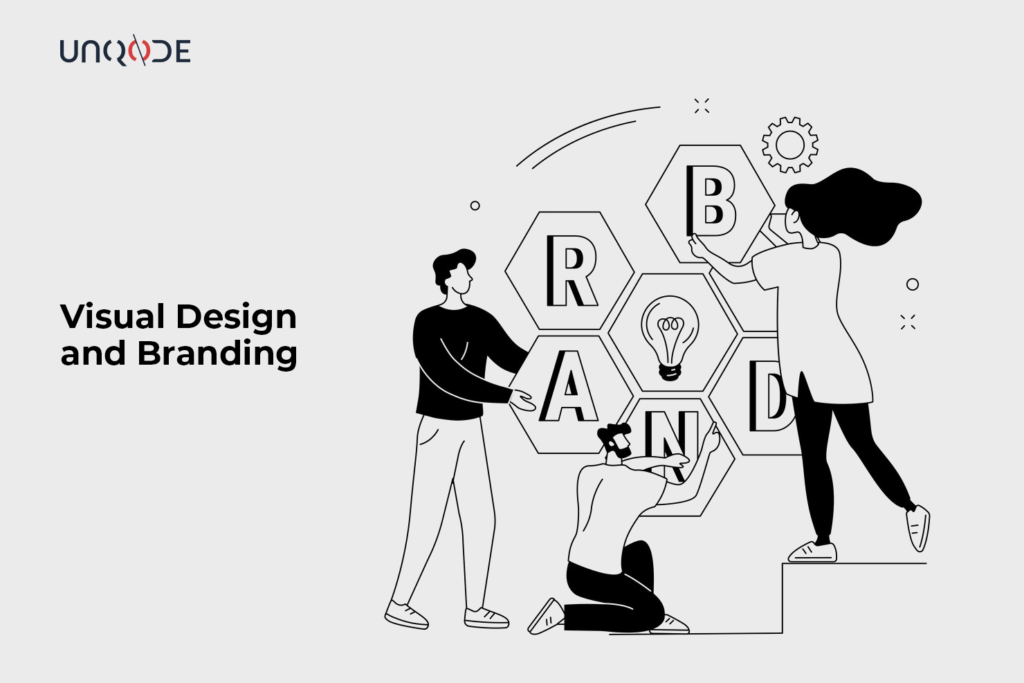
Visual design and branding are essential elements for any business website. Any business has to be very cautious when launching new product websites in such a crowded and competitive world, especially when you are a Startup or small business. Your website is your voice, so your visual identity should be well-defined to communicate your mission, vision, and personality. This will tell a story about the brand and its offerings to the target audience.
Effective visual design considers typography, color schemes, imagery, and composition to create a cohesive look that resonates with the target audience.
The right color palette can evoke specific emotions, such as Trust, excitement, and innovation, which could align with your brand identity and message. Typography and imagery not only express professionalism and creativity but also accessibility because they are crucial parts of Search engine guidelines for ranking any website.
Branding: Elevating a Startup’s Position
A tech startup focused on material science testing services recently sought to carve out a niche in a competitive landscape. They initially launched their website as a minimum viable product without conducting any research or establishing brand guidelines, resulting in a lack of cohesive branding and visual appeal, which made it difficult for visitors to trust them. Consequently, the startup team struggled with a high bounce rate. Eventually, they recognized this issue and invested in a redesign. In the new design, they conducted user research and market analysis. The updated design utilized a consistent color palette of yellow and black, colors that often signify specific material properties. In optical materials, yellow appears due to the absorption and emission of light by elements like copper or sulfur, commonly found in glasses, ceramics, and polymers. The new design features clean typography and high-quality images of their material products to improve accessibility. This transformation enabled the business to convey its commitment and present itself as a trustworthy brand, resulting in a notable increase in customer engagement and brand recognition.
Content Strategy and Copywriting
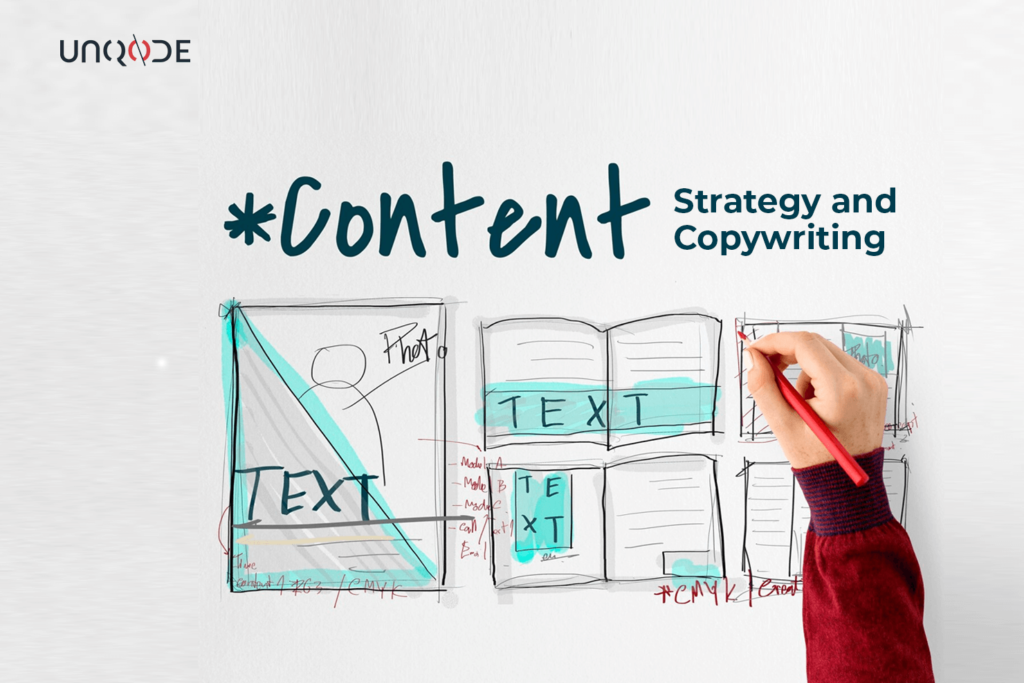
A robust content strategy outlines how to create and distribute content that resonates with a targeted audience. Copywriting involves crafting compelling text that motivates individuals to take action. Together, these elements enable businesses to communicate their message effectively and enhance brand visibility.
Quality content is vital for any established business website and startup. Concise and captivating copy conveys the startup’s message and fosters user engagement. It also provides details about products and services.
When crafting content, it’s important to emphasize a solid content strategy. This guarantees that each word has a purpose and aligns with our business objectives.
An effective content strategy boosts SEO, making it easier for prospective customers to discover the site. Additionally, it engages visitors by providing them with valuable insights. From appealing headlines to straightforward product descriptions and enlightening blog entries, well-crafted copy builds trust, showcases expertise, and encourages visitors to convert.
Content writing suggestions for Startups:
Headlines: Make them concise, straightforward, and focused on benefits to quickly capture interest.
Product Descriptions: Emphasize essential features and advantages using clear, simple language that resonates with your target audience.
Blog Content: Consistently release useful and relevant articles that tackle pain points, and trends, or demonstrate how your product addresses issues. This not only establishes your brand as an authority but also enhances SEO.
Conclusion
Investing in Professional Website Design for Startup Success
A well-designed business website offers countless benefits to startups in various industries, such as tech startups, eCommerce businesses, and service-based ventures. It helps startups build a strong online presence and spread their business globally.
Investing in professional website design ensures better long-term results and rapid business growth, particularly in terms of scalability, user experience, and brand credibility for industries like fintech, healthcare, or SaaS startups.
In today’s competitive digital landscape, investing in a high-quality website is a Good Investment and a critical step toward the future success of your startup business.

